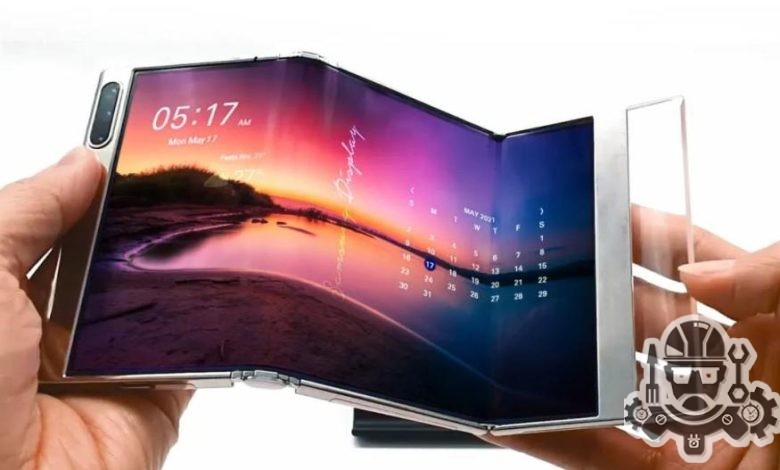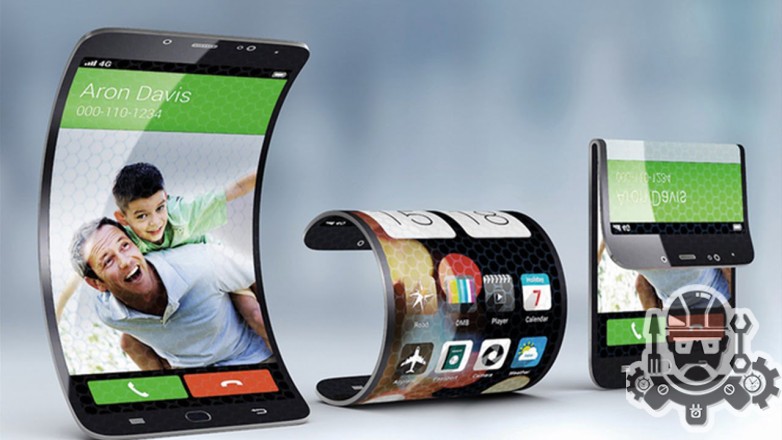Flexible Mobile Phone Screen Tech

Contents
What Is A Flexible Mobile Phone Screen?
A flexible mobile phone screen refers to a display technology that allows the screen to bend or curve without breaking. Traditional smartphone screens are made of rigid materials like glass, which limits their design possibilities and makes them more prone to damage. However, with the advent of flexible displays, phone manufacturers are now able to create devices that are more durable and offer unique features.
One key technology used in flexible mobile phone screens is OLED (Organic Light Emitting Diodes). Unlike traditional LCD (Liquid Crystal Display) screens, OLED screens do not require a backlight. Instead, each individual pixel can emit its own light. This allows for greater flexibility in terms of screen design and size. OLED screens can be made thinner, lighter, and more flexible, making them an ideal choice for smartphones with curved or foldable designs.
Another technology commonly used in flexible displays is the use of thin-film transistors (TFTs). TFTs are responsible for controlling the individual pixels on the screen. By using thin and flexible materials like polymers, TFTs can be made bendable, enabling the entire display to flex without affecting the functionality of the screen. This technology makes it possible for smartphone screens to be folded or curved without any distortion or damage.
- Achieving flexibility in mobile phone screens poses several challenges for manufacturers. The materials used must be able to withstand constant bending, while still maintaining high-quality display performance. Additionally, the development of flexible screens requires new manufacturing processes to ensure the integration of other components, such as touch sensors and protective layers.
- Flexible mobile phone screens have opened up a world of possibilities for the future of smartphone design. With a flexible display, users can benefit from larger screen real estate without sacrificing portability. Foldable phones, for example, can transform from a compact device to a tablet-sized screen, providing a versatile user experience. Additionally, flexible screens can be molded to fit innovative form factors, such as wrap-around displays or rollable screens.
- In conclusion, a flexible mobile phone screen allows for greater durability and design flexibility in smartphones. OLED and TFT technologies are essential in achieving this flexibility, enabling screens to bend or curve without compromising performance. While challenges exist in developing flexible screens, the potential for future applications and possibilities is vast. Whether it be foldable phones or unique form factors, flexible displays are shaping the future of smartphones and revolutionizing the way we interact with our devices.
Advantages Of Flexible Displays In Smartphones

The world of smartphones is constantly evolving and innovating, and one of the latest advancements in this field is the introduction of flexible displays. A flexible display is a screen that can be bent or curved without being damaged, offering a whole new level of design possibilities and user experiences. In this blog post, we will explore the various advantages of flexible displays in smartphones.
First and foremost, one of the biggest advantages of flexible displays is their durability. Traditional smartphone screens are made of rigid materials like glass, which are prone to cracking or shattering when dropped or subjected to external pressure. On the other hand, flexible displays are made of flexible materials such as plastic, which are not only more resistant to damage but also provide a higher degree of flexibility. This means that smartphones with flexible displays can withstand accidental drops and bends, offering users a greater peace of mind.
Another advantage of flexible displays is their ability to offer enhanced design possibilities. With traditional rigid displays, smartphone manufacturers are limited in terms of design options. However, with the introduction of flexible displays, the possibilities are endless. Smartphone screens can now be curved or even folded, allowing for more creative and innovative designs. This opens up new avenues for smartphone manufacturers to differentiate themselves in a highly competitive market and offer unique and visually appealing devices to consumers.
| Advantages | Benefits |
|---|---|
| 1. Durability | Flexible displays are more resistant to damage, offering increased durability. |
| 2. Design Possibilities | Flexible displays allow for curved or folded screens, enabling innovative and visually appealing designs. |
| 3. Improved User Experience | Flexible displays provide a unique and immersive user experience, enhancing interactions with the device. |
In addition to durability and design possibilities, flexible displays also offer an improved user experience. The ability to bend or curve the screen allows for a more immersive and interactive experience. For example, a smartphone with a flexible display could have a curved screen that wraps around the edges, providing users with a wider viewing area and a more engaging visual experience. Furthermore, flexible displays can enable new forms of input, such as pressure-sensitive touch or gestures, enhancing the overall usability of the device.
In conclusion, the advantages of flexible displays in smartphones are significant. They offer increased durability, allowing devices to withstand accidental drops and bends. Additionally, flexible displays provide unique design possibilities, enabling manufacturers to create visually appealing and innovative devices. Lastly, these displays enhance the user experience by offering immersive interactions and new forms of input. As the technology behind flexible displays continues to improve, we can expect to see even more exciting developments in the world of smartphones.
Technologies Used In Flexible Mobile Phone Screens
Flexible mobile phone screens are becoming increasingly popular in the smartphone industry. These screens offer a range of benefits such as durability, lightweight design, and improved user experience. However, the technology behind these screens is complex and requires a combination of different technologies to achieve flexibility while maintaining functionality.
One of the key technologies used in flexible mobile phone screens is the use of organic light-emitting diodes (OLEDs). OLEDs are a type of display technology that uses organic compounds to emit light when an electric current is applied. This technology allows for the creation of thin and flexible displays that can be bent and curved without compromising picture quality or functionality.
Another important technology used in flexible screens is the use of thin-film transistors (TFTs) made from materials such as amorphous silicon or polycrystalline silicon. TFTs are used to control the current flowing through each pixel in the display, allowing for precise control of the image displayed on the screen. The use of flexible TFTs enables the creation of bendable screens that can be molded into different shapes.
Challenges In Developing Flexible Phone Screens

Developing flexible phone screens presents a number of challenges for manufacturers and engineers. While the concept of flexible displays is exciting and holds tremendous potential, there are several technical hurdles that need to be overcome in order to achieve a reliable and durable product.
Material Selection: One of the major challenges in developing flexible phone screens is selecting the right materials. Traditional smartphone screens are made of glass, which is rigid and brittle. However, flexible screens require materials that are not only flexible but also durable and resistant to breakage. Finding suitable materials that can withstand the stresses of daily use without compromising on performance is a complex task.
Bending Radius: Another challenge is determining the optimal bending radius for flexible screens. The screen must be flexible enough to bend without causing damage to the display or affecting the functionality of the device. However, if the bending radius is too large, it may result in a bulky and less ergonomic design. Achieving the perfect balance between flexibility and usability is crucial in the development process.
Manufacturing Techniques: The manufacturing process for flexible screens poses its own set of challenges. Traditional display manufacturing techniques may need to be modified or entirely reimagined to accommodate flexible materials. Additionally, ensuring consistent quality and performance across large-scale production is another hurdle that manufacturers need to overcome.
- Liability to Scratches: Flex screens can be more susceptible to scratches compared to traditional glass screens. Finding ways to enhance the durability and scratch resistance of flexible screens is an ongoing challenge for developers.
- Fold Durability: One of the ultimate goals of flexible phone screens is the ability to fold or roll the device. However, achieving long-lasting fold durability without any performance degradation or damage to the display remains a significant challenge.
| Challenges in Developing Flexible Phone Screens: |
|---|
| Material Selection |
| Bending Radius |
| Manufacturing Techniques |
| Liability to Scratches |
| Fold Durability |
These are just a few of the challenges that engineers and manufacturers face when it comes to developing flexible phone screens. Overcoming these hurdles requires a combination of innovative thinking, advanced materials, and refined manufacturing techniques. Despite the difficulties, the potential benefits of flexible displays make the effort worthwhile. As technology continues to advance, we can expect to see more progress in the development of flexible phone screens and their integration into our daily lives.
Future Applications And Possibilities For Flexible Displays
Flexible displays have gained significant attention in recent years due to their exciting potential for future applications and possibilities. As technology continues to advance, it is becoming increasingly evident that flexible screens are not limited to just smartphones. The future holds endless opportunities for the implementation of this innovative technology in various fields and industries.
One of the potential future applications for flexible displays is in the healthcare industry. Imagine a bandage with a flexible display that can monitor vital signs and provide real-time information about a patient’s condition. This would revolutionize patient care by making it easier for medical professionals to monitor and track patients’ health without invasive procedures. Additionally, flexible displays could be integrated into wearable devices, such as smartwatches or fitness trackers, to provide users with more accurate and detailed health data.
Another exciting possibility for flexible displays lies in the automotive industry. Traditional dashboards and instrument clusters could be replaced with flexible displays that can adapt to the shape and contours of the vehicle’s interior. This would not only enhance the aesthetic appeal of the car’s interior but also improve functionality and user experience. Furthermore, flexible displays could be utilized in the windows or windshields of vehicles to provide augmented reality information, such as navigation instructions or hazard warnings, directly in the line of sight of the driver.
- The future of gaming could also be transformed by flexible displays. Imagine a gaming console that can be folded or rolled up, allowing gamers to take their gaming experience wherever they go. Flexible display technology could enable the creation of portable gaming devices with larger screens that can be easily stored and carried. Additionally, virtual reality (VR) gaming could greatly benefit from flexible displays, as it would make VR headsets more comfortable and portable.
| Advantages of Flexible Displays for Future Applications |
|---|
| 1. Versatility: Flexible displays can adapt to various shapes and forms, opening up a wide range of possibilities for their implementation in different industries. |
| 2. Portability: The ability to fold, roll, or bend flexible displays makes them highly portable, allowing for easy transportation and storage. |
| 3. Durability: Flexible displays are generally more durable than traditional rigid screens, as they can withstand bending and twisting without breaking. |
| 4. Improved User Experience: The integration of flexible displays in various devices and applications can greatly enhance user experience by providing more immersive and interactive interfaces. |
| 5. Enhanced Design Opportunities: With the flexibility to conform to different shapes, flexible displays offer designers more freedom and creativity in product aesthetics. |
In conclusion, the future applications and possibilities for flexible displays are vast and exciting. From healthcare to automotive, gaming to portable devices, the versatility and adaptability of flexible display technology hold immense potential for transforming various industries. As advancements in materials and manufacturing processes continue, we can expect to see even more innovative uses of flexible displays in the near future.
A flexible mobile phone screen is a display technology that allows the screen to bend and curve, making it flexible and adaptable to different form factors.
Flexible displays offer several advantages, such as increased durability, allowing the phone to withstand drops and impacts better. They also enable innovative designs and form factors, such as foldable and rollable phones. Additionally, flexible displays offer improved portability and convenience.
Flexible mobile phone screens use various technologies, including OLED (organic light-emitting diode) and AMOLED (active-matrix organic light-emitting diode) displays. These technologies allow for the flexibility and bending capabilities of the display.
Developing flexible phone screens comes with several challenges. One of the main challenges is ensuring the durability of the screen while maintaining its flexibility. Another challenge is finding reliable and efficient manufacturing processes to mass-produce these displays. Moreover, optimizing the user experience and interface for flexible screens can be complex.
Flexible screens enhance the user experience by offering larger display areas in a compact form factor when unfolded or unrolled. They also provide the option of multitasking by splitting the screen into multiple windows or allowing the user to run different apps simultaneously. Additionally, flexible screens offer a more immersive viewing experience due to their larger, borderless displays.
While flexible displays are gaining popularity and becoming more mainstream, it is unlikely that they will completely replace traditional rigid screens in the near future. Rigid screens still have their advantages, such as lower production costs and widespread adoption in current devices. However, flexible displays will continue to evolve and coexist with rigid screens, offering more choices and innovative designs for consumers.



